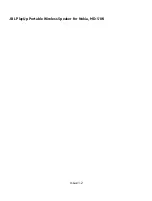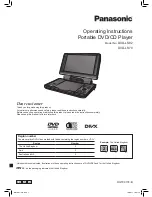
Page 19
Issue 07/2011
Description of power generation system
Generator
1.4
Generator
1.4.1
Function
y
The generators are brushless, self-excited synchronous inner-pole
generators, which are electronically-controlled.
y
The voltage supplied by the generator is regulated by the built-in
electronic generator controller so that the output voltage between
idle speed and the nominal load meets the requirements of IEC 38.
This equates to a quality standard which is comparable with the public
electricity supply network. The constancy of the output frequency is
dependent on the speed constancy of the drive unit.
y
If the generator sustains a temporary overload (below the actuation
time of the protective circuit breaker) or if devices are connected to the
generator with excessive power draw or excessive start-up power draw,
the generator controller will automatically restrict the power output (by
reducing the exciter field current) and reduce the output voltage.
y
The generators meet the EMC directives EN ISO 14982, ISO TC 127/ISO FDIS
13766/DIN EN 13909 and other EMC standards referenced in these norms.
y
The generators are cooled by self-ventilation independent of the direction
of rotation. The cooling air is drawn through the cooling profiles by the fan
wheel on the rear side of the generator and across the housing, towards
the front side.
1.4.2
Mechanical versions
Depending on their nominal output, the generators are constructed
in various model sizes. Depending on the model, there installation of
the generator may vary. Reference is made to these deviations in the
corresponding sections of this manual.
The following table and Figure 2 give an overview of the most important
features of the generators.
Summary of Contents for DWG (BL) 13/7-2 ZE
Page 87: ...Page 87 Issue 07 2011...
















































